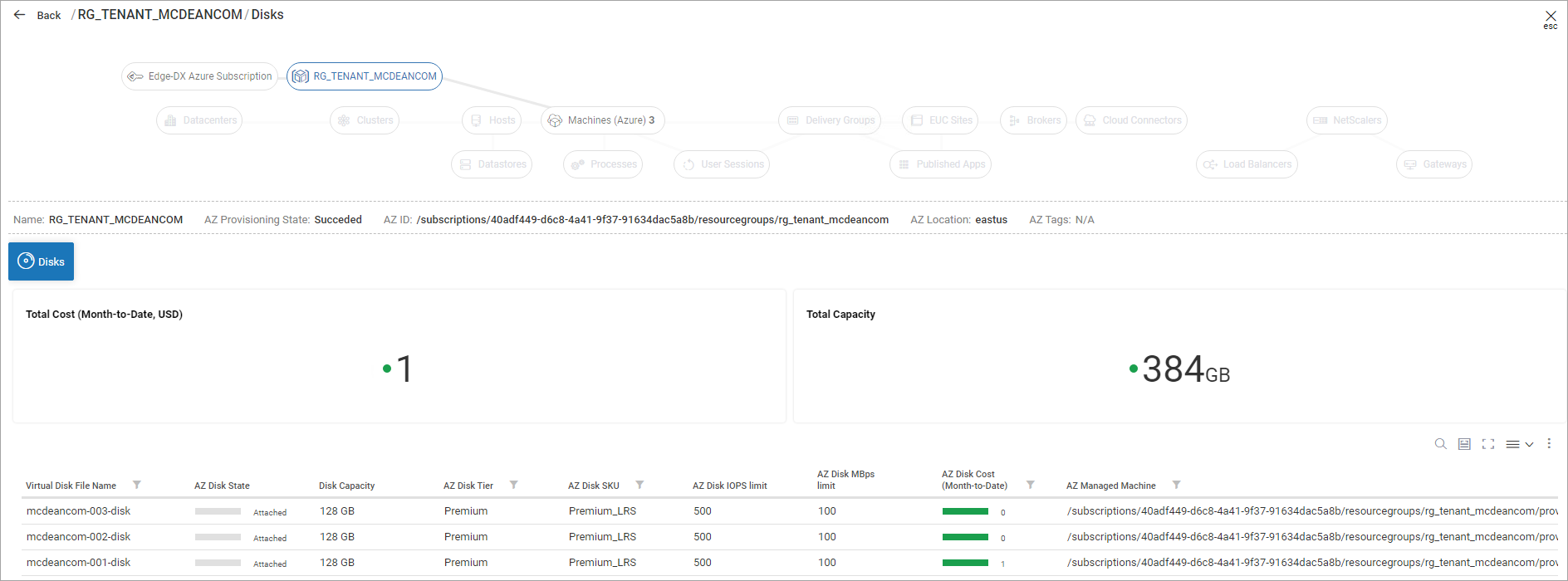This article walks you through all Azure-related updates that we added to our VDI App. You can benefit from all VDI App functionalities like the Discovery view or Custom Dashboards.
Azure-Related Elements in Topology View
The topology view in the VDI App helps you to drill down into Azure-specific entities. In this section, we cover how you can access the different views and which information you can see in each.
Subscriptions
The Subscriptions button allows you to see all subscriptions that are connected to your ControlUp environment. Click the button to see all more details like cost widgets or Azure data.


Resource Groups
The R. Groups button lets you navigate through all resource groups that are associated with the connected subscriptions.

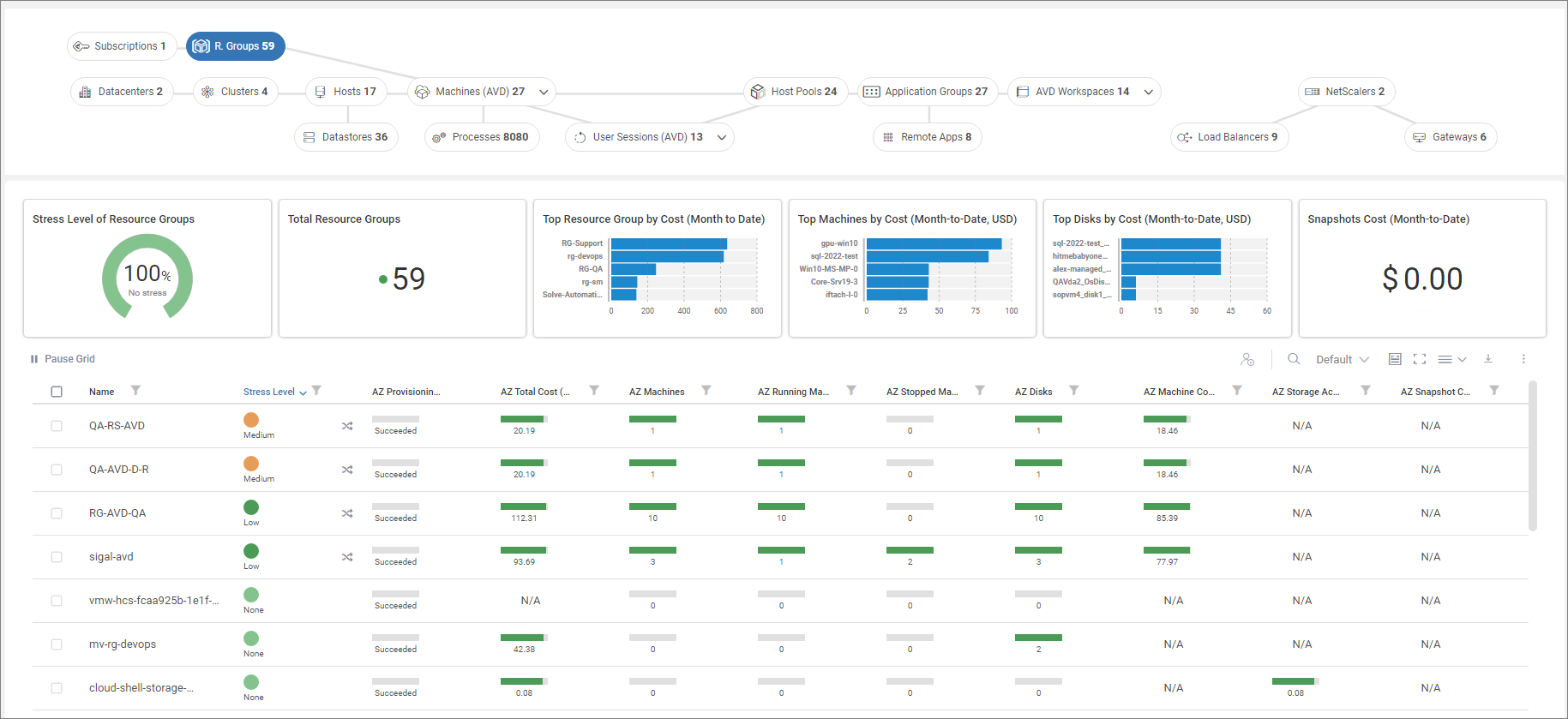
Machines (Azure)
The Machines drill down includes an entry for Azure machines - Machines (Azure). On the main page, the number of Azure machines is the total number of machines from connected subscriptions.

In our organization, we have connected one Azure subscriptions which consists of 59 resource groups under which 121 Azure virtual machines (1). The number of virtual machines is the sum of the AZ Machines column across all connected subscriptions (2).
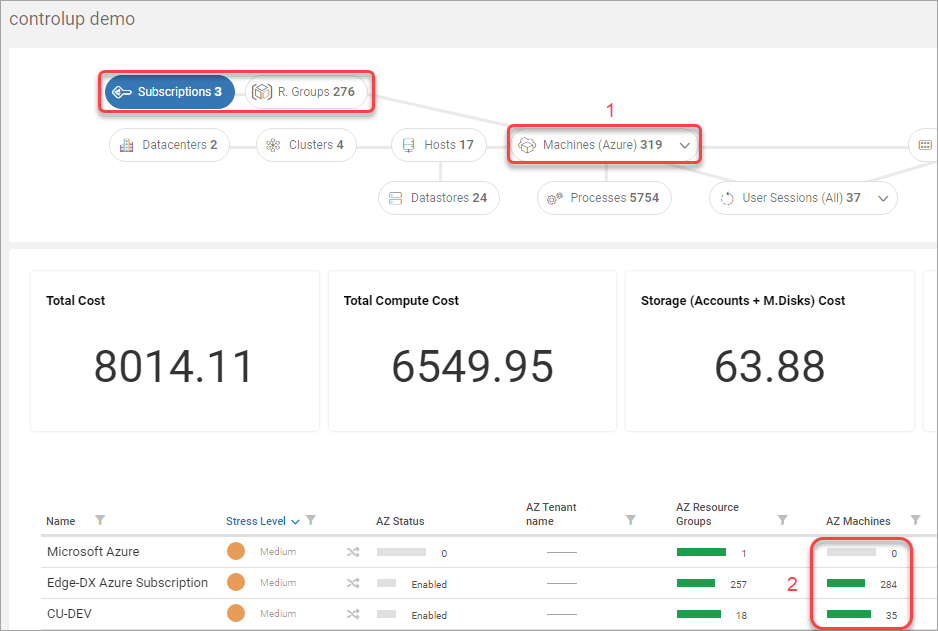
The same logic applies to the subscription drill down. If you select a subscription, then the toatl number of Azure machine is the sum of all virtual machines within the selected subscription. In our case, the Edge DX Azure Subscription consists of 284 Azure machines.
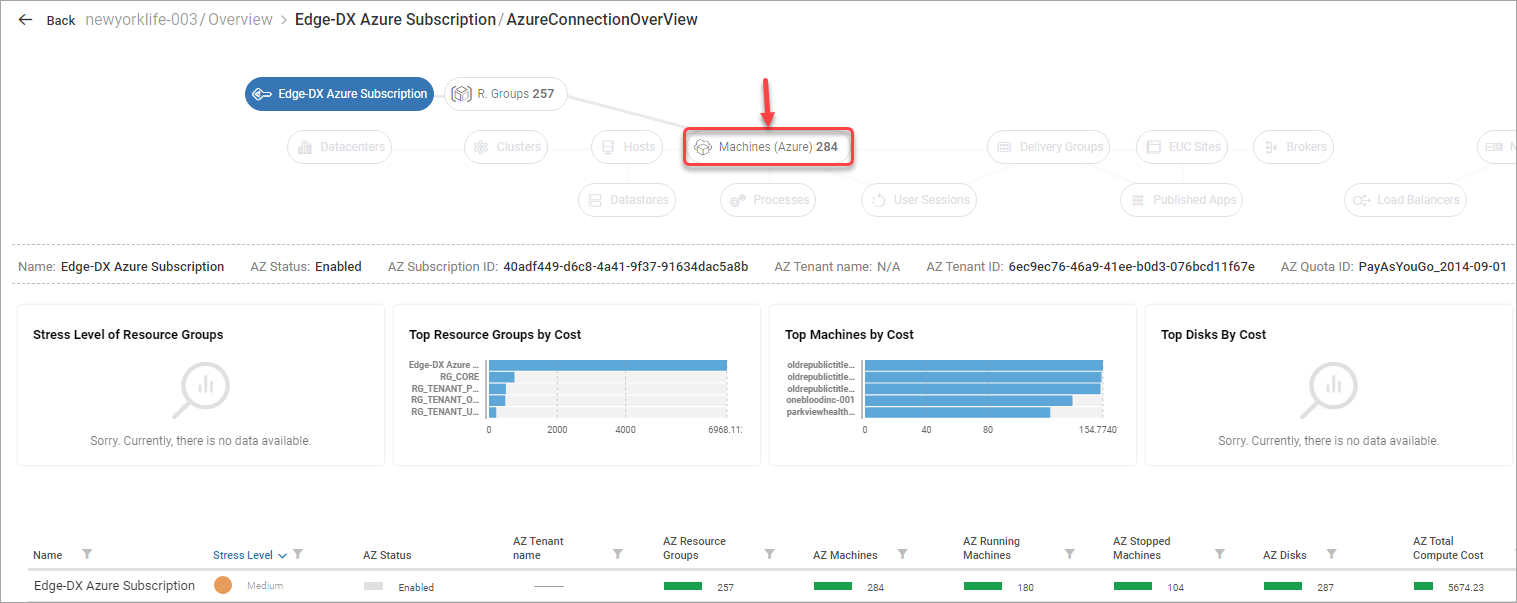
Machines (AVD)
Clicking the Machines (AVD) items allows you to view all AVD machines that are located in the connected resource groups.
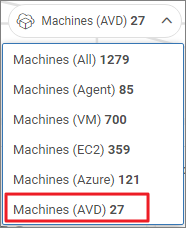
Host Pools (AVD)
To get an overview of all AVD host pools, click the Host Pools icon in the topology view.
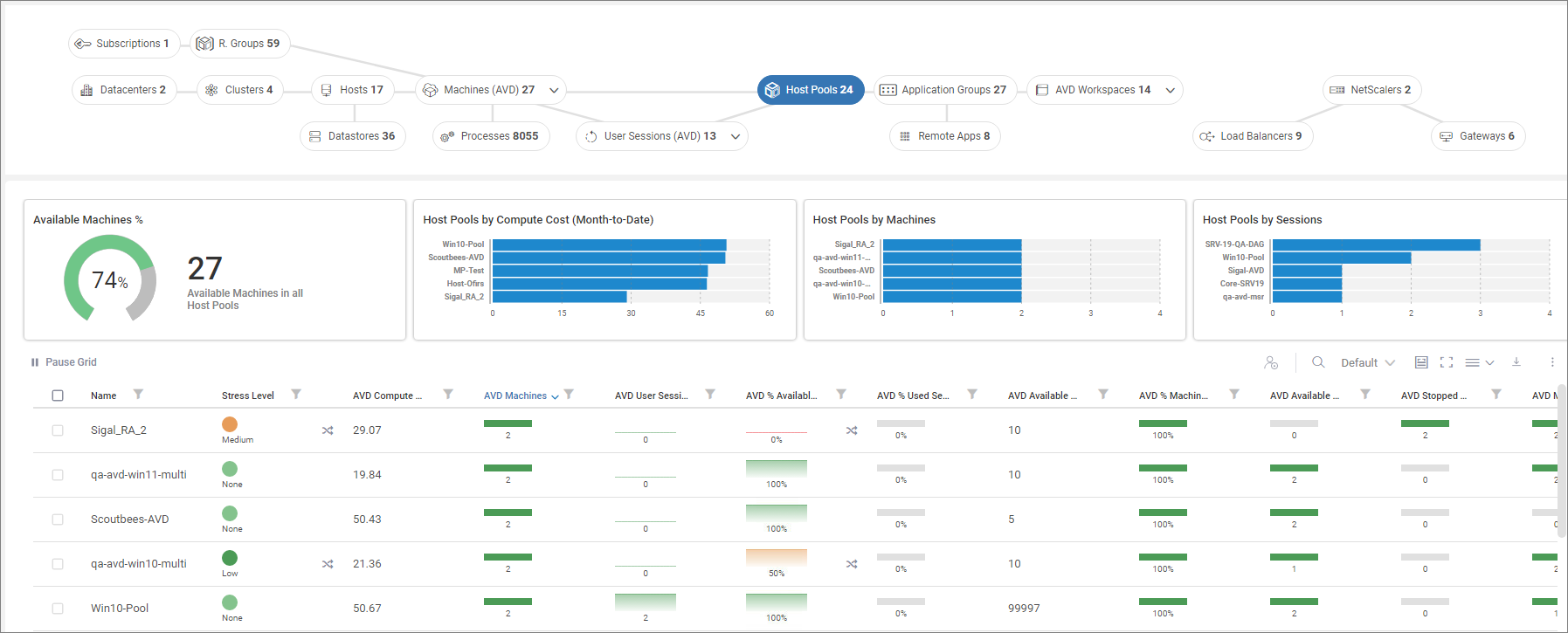
Click here to see available metrics in this view.
Virtual Disks
The VDI App can show you virtual disks associated to a specific resource group. Select a resource group in the topology tree and you will see a Disks button above the Total Cost widget.
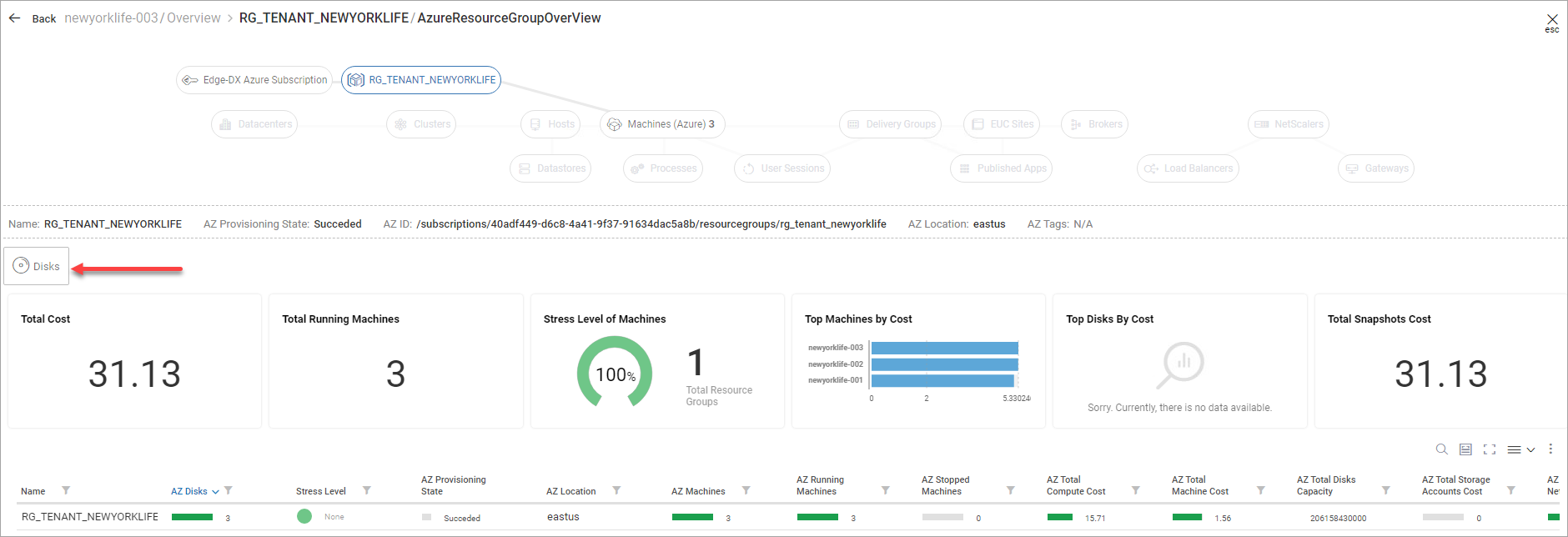
In the Disks view, you can see agreggrated details of disks in the selected resource group.
